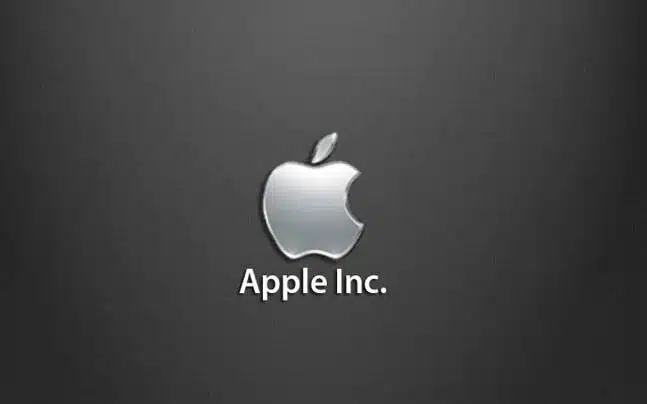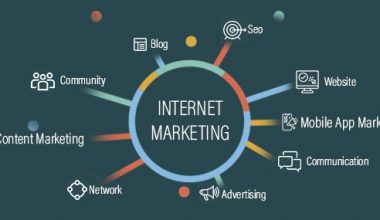There’s no doubt that standing out from the crowd is hard in the business world these days. Can you vividly remember a time you went into a store and saw rows and rows of jeans that all looked the same? It can be too much, right? Which brand should you trust? Which ones will fit well? What kind of experience will you have? Now, that’s where branding beyond logos comes in. It’s what turns your company from a name on a shelf into a friend (or at least a good pair of jeans).
Branding is more than just a cool logo, though a cool logo is nice. It’s about giving your perfect customer a complete experience that speaks to them. It’s the story you tell, the feelings you stir up, and the way you make them feel. People trust and are loyal to a strong brand, even when the price is low. This leads to more sales because people feel like they have a stronger connection with the brand.
So, how do we get to this perfect state of branding? Hold on tight, because we’re about to dive into the fascinating world of branding. Where you will find out why it’s not just about logos but a whole method that shapes your business’s identity. I have some ideas that might completely change how you think about and carry out your brand strategies.
Key Takeaways
- Holistic branding involves more than just designing a logo; it encompasses crafting a cohesive identity that resonates with your audience across all touchpoints.
- Consistency in visuals, messaging, and customer experiences is crucial for building trust and fostering brand loyalty among your audience.
- Storytelling is a powerful tool for creating emotional connections with your audience. Authentic brand stories resonate deeply and drive action.
- Embracing innovation and fostering a culture of creativity within your organization keeps your brand relevant and ahead of the curve in a rapidly evolving landscape.
- Adaptability Is Key: As the business environment changes, your branding strategy should also evolve accordingly. Stay agile, listen to feedback, and be prepared to adapt to meet the evolving needs of your audience.
The Fundamentals of Branding
So we now know that branding is what will turn your business from “blur” to “beautiful. But what is it? At its most basic, branding is how people think about your business as a whole. It’s the story you tell with your logo, website, social media posts, and contacts with customers. It’s like the fingerprint of your business—something that everyone can recognize and that is yours.
The Fundamentals of Branding: What is Branding?

In straightforward terms, branding involves researching, developing, and applying unique features to your organization to help consumers connect your brand with your products or services. Branding is seen in social media captions, billboard color palettes, and the materials used for packaging by brands. This is because businesses that establish powerful brands understand the importance of their brand identity being present across all platforms.
They understand that their names go beyond mere labels and can attract customers to select their products from a range of choices. Take Coca-Cola as an example, with one of the most easily identifiable logos globally. For more than a century, the timeless red and white lettering, lively artwork, and unique font have consistently attracted buyers.
The Coca-Cola brand has proven its enduring appeal through consistent, successful branding that consumers love. That being said, branding is a continuous process that involves connecting with your customers and your business on a deeper level. However, it differs from marketing.
Elements of Strong Branding
Why is this business of branding so important? In today’s crowded market, it’s important to stand out. In my opinion, the battle is very tough! Being that a dozen or more other businesses possibly offer the same goods or services. But, how then do you get people who might buy from you to choose you? Branding helps with that. The magic is what makes you stand out and individuals remember you, naturally in a good manner!
That being said, great branding isn’t made up of just one thing. There are a few main elements that make up these beautiful patterns:
#1. Images
This includes the pictures you use in your marketing products, your website design, your logo, and even the colors you use. Imagine entering a coffee shop with a clean, simple design and right away feeling like you could get work done. Maybe a store with warm, rustic vibes made you feel at ease and comfortable? Images and pictures make an impact that lasts.
#2. Messaging
How do you tell the story? What are your primary beliefs? Tell me what makes you unique. Communication with your audience through messages is what makes your brand sound like a person. To do this, you need to write a clear, concise message that speaks to the wants of your ideal customer.
#3. Customers’ Perspectives
Whatever people think your brand is, that’s what it is. Therefore, it should include everything you’ve done with your business, from reading your blog posts to talking to your customer service personnel. I learned how powerful personalized exchanges can be when I started calling customers by name in emails. A thank-you note or a follow-up call are small things that can make a big difference in how a customer feels.
This is exactly why it’s so important to have great customer service! All of your brand’s interactions have an impact on its perception in general. Hold on, there’s more! A truly remarkable brand goes beyond just visuals, message, and how customers see it. a truly remarkable brand goes beyond that:
A. Brand Story
Each brand has a history, a purpose, and a set of beliefs that define it. This story makes an emotional connection with customers and people who share your goal.
B. Brand Voice and Tone
With writing and talking, this is your brand’s style. Playful and friendly? Or dominant and professional? Maintaining a consistent style and tone helps people trust and connect with your brand.
C. Brand Community
Communities form around strong brands’ beliefs and missions. This could mean engaging with your audience on a deeper level through social media groups, reward programs, or events.
Using a real-life case will help. Do you remember those well-known brands of sports shoes? Right? They all make sneakers. What about the different feelings that each brand makes you feel? One might be linked to high-performance athletes (think compelling images of world-class runners and messages that focus on new ideas and pushing the boundaries).
In the same way, other companies might focus on cutting-edge technology, showing futuristic styles and technical details in their ads. Others may focus on a classic, timeless look by using old-fashioned looks and a brand story that is full of custom. These brand differences come from great visuals, messaging, and the experiences they give their customers. However, by mastering these basic branding elements, you can create a unique personality that speaks to your audience and makes you stand out from the rest.
The Common Misconception About Branding
Let’s be honest about this. Each of us has been there. Scrolling through endless company websites, each with a fancy logo but a personality as bland as yesterday’s oatmeal. That feeling alone is enough to make you wonder, “Is that all there is to branding? Just a cool logo?”
There’s a common misunderstanding that many of us, including myself, have had at some point: branding is only about making the right logo. spoiler alert: it’s not true! Explore with me the issues that come with this limited view and learn how some smart companies managed to escape the logo trap. Exactly what are these common misconceptions?
That little picture that we think controls our company is called the logo. When my business was just starting, I remember spending hours fiddling with logos because I thought I had found the secret to success. Little did I know that it was only the iceberg of branding.
The shocking awakening i received came when i released my beautifully designed logo into the world, anticipating a flood of buyers. Reality check: it didn’t happen. As a result, i understood that branding is a big picture and that a mark, while important, is only one stroke in the brand identity painting.
The issue with the logo-centric strategy is that it exclusively concentrates on the visual part, disregarding all other factors. Storytelling, emotional connection, and a unique experience are all missing. Which is not good for an effective strategy.
Examples of Companies that Successfully Expanded Their Branding Strategies Beyond Logos.
Here are some examples of renowned companies that have done a good job of building their brands with more than just logos. They know that branding is about making an impression that lasts, earning trust, and eventually getting to know customers better.
#1. Beyond the Siren: Starbucks

Speaking of Starbucks, As famous as the mermaid logo is, their business is much more than just that green siren. Additionally, Starbucks opened a third location, which is not only a coffee shop but also a friendly spot where people can meet. In other words, experience, society, and yes, coffee are all important.
#2. Apple: More Than Just a Fruit

Imagine an apple and a smooth, bitten apple might come to mind. As a result, Apple’s brand is an ecosystem, encompassing everything from the simple style of its products to the way customers feel when they shop there. Their branding went beyond just a name to include new ideas, simplicity, and a way of life.
#3. Nike: Flying into Fiction

Although the swoosh makes Nike’s logo easy to spot, their branding is more than just a checkmark. Ideology: “Just Do It” is a call to action. In addition to apparel, Nike sells inspiration, confidence, and the drive to succeed.
#4. Peru and Patagonia

One example is Patagonia. Simply put, their image is easy to recognize. However, what makes them unique is their unwavering dedication to environmental action. Their platform lets them talk about environmental heroes, support sustainability, and even urge people to fix their clothes instead of buying new ones.
#5. Dove

Doneve is another great example. People know their name for more than just their famous logo. Dove has a reputation for encouraging people to love their bodies and accept themselves. A lot of people will relate to this message, which makes Dove a brand that does more than just sell soap.
Finally, keep this in mind: your brand is a story, an experience, and a connection with the people who see it. So, break away from the logo-centered view, discover the many branding options, and let the full story of your brand emerge.
Common Misconceptions About Branding: Holistic Branding Strategies
We already know that a logo is a good start, but it’s not the whole thing. It’s like that cute sprinkle on top of your cupcake—it makes it look nice, but it’s not the whole thing, right? Brand magic happens when you give your audience a complete experience that speaks to them on many levels.
Now things get interesting: let’s go on a journey to find the secret sauce that goes beyond logos and takes your brand to new heights: holistic branding strategies. Come along with me as I share personal stories, useful tips, and encouraging examples that show how taking a holistic approach to branding can change everything.
#1. Visual: More Than Just Looking Pretty

We all know that first impressions remain important. In this modern world, the first thing that people see is often what they remember. Have you ever scrolled past a website that looked bad because the design was bad and the colors didn’t go together? That makes you wonder about how skilled they are, right? Here’s the deal: a brand identity that looks good makes a good first impression and supports your brand message. Here’s what makes it special:
A. How Color Works:
Colors can make us feel a lot of different things. Think about how a website that is blue and calm might make you feel at ease and trusting, while one that is bright red might make you feel energized and excited. So, pick colors that go with the messages you want to send and the way you want people to feel.
B. Consistency
Imagine if your favorite band changed their sound all of a sudden in the middle of a show. It would be shocking, right? A name is the same way. Make sure that your website, social media, and marketing tools all use the same visual language so that people can easily recognize your brand.
C. Power of Design
Do not forget how powerful a good design can be. Spend money on professional, clean images that show off your brand’s style. You might want to use certain styles, layouts, and images that help your message stand out. Also, the visuals for your business shouldn’t just be on your website or social media pages; they should be on your packaging, promotional materials, and even your online content.
#2. The Power of Messaging: Crafting Your Brand Story

Every great brand has a story about how it started, what it stands for, and how it got there. This story isn’t just filler; it’s what your brand is all about. Remember that great brewery I told you about? Their story is all about using products from the area and making a place where people can get together. They use this story in everything, from the words on their website to the funny labels on their beers. This helps them stand out in a crowded market. Here’s how to write an interesting brand story:
A. Understand your “why”:
What drives you? What are you trying to fix? Why should people care about your business?
B. Communicate with Your Audience:
Who do you want to get in touch with? How do they feel and what do they want? Make sure your story hits home with them.
C. Keep things simple and real:
Don’t try to change who you are. Real stories make people feel a certain way.
D. Coming up with slogans and taglines
Taglines and slogans are like war cries for your brand. They are short, catchy phrases that say what your brand is all about. Like “Just Do It” from Nike or “Think Different” from Apple. So, think about what makes your brand unique and what speaks to your audience on a deeper level as you write yours.
#3. Customer Experience: It’s All About Them

How people feel about your business is what makes it successful. Every touchpoint a customer has with your brand, from the first time they see it to the help they get after buying something, shapes how they see it. If you give people great experiences, they’ll become brand advocates and shout your praises from the skies.
Remember the time you called customer service and the person you talked to was rude and not helpful? Doesn’t make people loyal to the brand, does it? Make your customers feel like rock stars by doing these things:
A. Personalized service
Not just the usual “Hi there!” It’s great when you can make things your own. Whether it’s offering proactive assistance or resolving issues promptly, go above and beyond to exceed your customers’ expectations.
B. Relationships Without Friction
Make it simple for people to buy from you. Provide an easy-to-use website, quick customer service, and a smooth purchasing process.
C. Take notes and change things
Get feedback from customers and look it over. You can use it to find places to improve and keep making your brand experience better.
#4. Building Your Digital Empire: Owning Your Online Presence

Having a strong online profile is important in today’s digital world. Making a simple website and hoping for the best isn’t enough for this. Use the power of the modern world in these ways:
A. Website Fantasy Land
Your website is the internet home of your brand. Make sure it looks good, has useful information, and is simple to use.
B. Social Media
Many social media sites let you connect with your viewers more deeply. Share interesting material, answer comments and messages, and make your brand seem more like a person.
C. The content is king
Make sure the material you make fits with your brand’s story and values. This could be videos, blog posts, infographics, or anything else that your audience will find useful.
D. Smart about SEO
Search engine optimization, or SEO, makes it easier for people to find your website on the web. Spend money on SEO strategies to make your business more visible.
Your brand is also more than just a logo; it’s a collection of images, words, experiences, and ideals that connect with your audience on a deeper level. So, use all of the branding tools, honestly tell your story, and watch your brand reach new heights of success.
Practical Steps for Implementing Holistic Branding
We now understand what holistic branding is all about giving your people a memorable experience, not just putting a cool logo on a t-shirt. But how do you put this into practice? You can turn your brand around with these steps.
#1. The Brand Audit: Taking Stock
Redecorating your home is a lot like changing your logo: you need to take stock first! A brand audit is a deep dive into your current company’s identity. That which you seek is located here:
- What can you say about your brand? Is it precise and interesting? Will it appeal to your target audience?
- What are your pictures saying? Use the same colors, fonts, and designs on all devices. Does their personality match your brand’s?
- How do you write messages? Is it understandable, brief, and consistent? Does it satisfy the wants and needs of your audience?
- How is your satisfaction with customers? Are there no problems or issues? Would your customers say they’re respected and appreciated?
In the end, your brand’s strengths and flaws will become clear if you honestly look at these areas. What’s next? This paves the way for the exciting part – crafting a winning branding strategy!
#2. Building Your Brand Blueprint: The Strategy Session
Once you understand your brand’s landscape, it’s time to plan! Imagine this as coming up with ideas for your ideal home improvement project. You should make sure of these things:
- Setting Goals: What do you want your branding to accomplish? Is it reaching a certain sales goal, making more people aware of the brand, or keeping customers loyal? Setting clear goals helps you stay on track and decide how successful you are later.
- Establishing Your Target Audience: Who do you want your business to reach? Gaining insight into their age, gender, hobbies, and needs is important for creating messages and experiences that stick. With the right information, you can talk to your dream customer instead of just shouting into the void.
- Creating Your Label Your brand’s style in writing is shown by its voice and tone. Playful and friendly? Or dominant and professional? Maintaining a consistent style and tone helps people trust and connect with your brand. Imagine the conversations you’d like to have with your viewers.
#3. Tracking Your Brand’s Success: Measuring Up
A budget is needed to fix up your house, right? Branding is the same. Feel confident that your hard work is paying off by keeping track of your progress:
A brand’s progress can be measured with key performance indicators (KPIs). But, according to your objectives, key performance indicators (KPIs) might include website traffic, social media activity, company mentions, or customer satisfaction scores.
Regular Reviews: Don’t let your brand plan run itself! Checking in daily will help you see what’s working and what’s not with your KPIs. Using real data instead of guesswork, you can change your approach this way.
#4. Building Brand Advocacy
Follow the steps below to build your brand advocacy
A. Engagement of Employees
Your workers are the ones who represent your brand. So, create a work environment that fits with the values of your brand and give your workers the tools they need to tell your brand’s story. Because, when workers are happy, they are more likely to promote the brand.
B. Loyalty programs for customers
Thank customers for their continued support by giving them rewards. This will encourage people to come back and spread the word about your business.
C. Influencer advertising
Connect with influential people who care about the same things you do and whom your target audience can relate. This is because using their influence can help spread the word about your brand and earn your trust.
#5. Leveraging Storytelling
Look into various brand models, like the Hero, the Explorer, or the Everyman, and choose the one that best fits your brand’s personality. This archetype can help you write interesting business stories, make people feel something, and help you connect with them on a deeper level. Also, you can,
A. Blog Post Content: Post useful, interesting, and helpful blog posts regularly. In this way, your brand becomes known as a thought leader in its field.
B. Plan for social media: Don’t just post; interact! On social media, share useful content, answer comments and messages, and join important conversations.
Don’t forget that it takes time and effort to build a strong business. In essence, you can make a brand that stands out and connects with your audience if you follow these steps and focus on making a brand experience that covers everything. If you want to tell the best story about your brand, pick strategies that fit your brand’s personality, embrace the process, be open, and never stop trying to get better.
What is the importance of branding?
A strong brand lets customers know what to expect. It represents you and your promise to your customers. Your brand helps you create clarity and stay focused. And also helps you connect with your customers emotionally.
What are the types of branding?
Here are some of the different types of branding that might work for your business.
- Corporate branding.
- Personal branding
- Product branding
- Retail branding
- Geographic branding
- Service branding.
What does a brand promise mean?
A brand promise is a promise you make to your customers about what they can expect from your business when they buy your goods or interact with your brand.
How do you make people trust your brand?
When people think of your business, they think of its value, which is called brand equity.
What’s the origin of the term “branding”?
Branding refers to the practice of branding livestock. The concept has been around for thousands of years. Today, it is an ongoing process of turning the company into a brand with a unique personality and strong reputation.
Conclusion
Finally, we’ve made it to the top of the branding peak! We explored the importance of creating a brand experience that goes beyond the image and connects with your audience on a deeper level. Don’t forget that your brand is more than just a pretty face.
I want to leave you with a final thought: Your brand is more than just a name or a product; it’s an experience, a story, and a connection with your audience. So, don’t be afraid to try all the different ways you can brand your business and let it reach its full potential.
References
- www.indeed.com
- blog.hubspot.com
- www.oberlo.com
- medium.com






